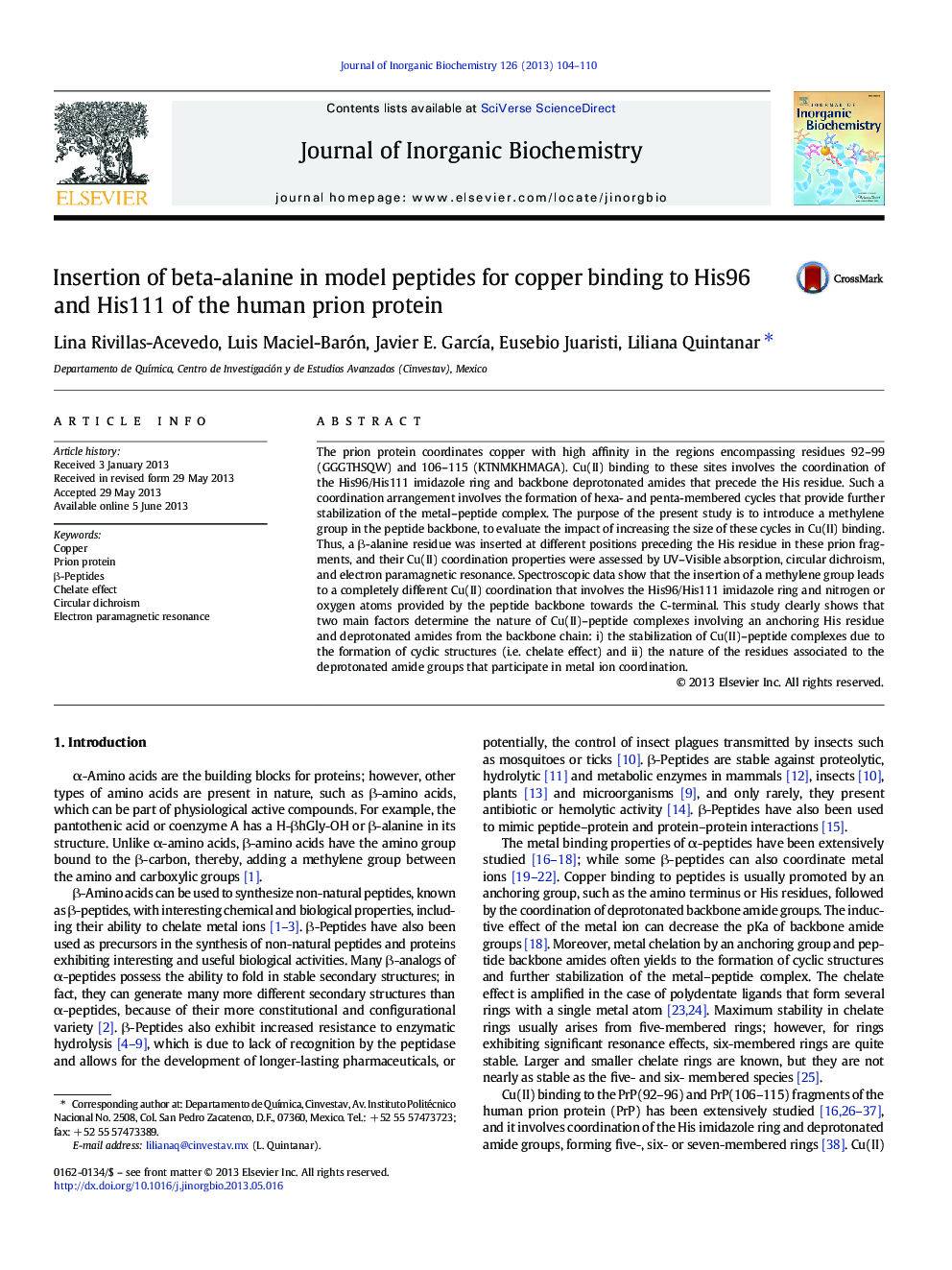| Article ID | Journal | Published Year | Pages | File Type |
|---|---|---|---|---|
| 1317565 | Journal of Inorganic Biochemistry | 2013 | 7 Pages |
•Insertion of β-alanine alters the copper binding properties of human prion fragments.•It prevents Cu(II) coordination to deprotonated amides preceding the anchoring His.•Cu binding to the β-peptides involves amides following the anchoring His.•Final Cu(II) coordination modes are determined by two factors:•The chelate effect and the nature of the residues around the anchoring His
The prion protein coordinates copper with high affinity in the regions encompassing residues 92–99 (GGGTHSQW) and 106–115 (KTNMKHMAGA). Cu(II) binding to these sites involves the coordination of the His96/His111 imidazole ring and backbone deprotonated amides that precede the His residue. Such a coordination arrangement involves the formation of hexa- and penta-membered cycles that provide further stabilization of the metal–peptide complex. The purpose of the present study is to introduce a methylene group in the peptide backbone, to evaluate the impact of increasing the size of these cycles in Cu(II) binding. Thus, a β-alanine residue was inserted at different positions preceding the His residue in these prion fragments, and their Cu(II) coordination properties were assessed by UV–Visible absorption, circular dichroism, and electron paramagnetic resonance. Spectroscopic data show that the insertion of a methylene group leads to a completely different Cu(II) coordination that involves the His96/His111 imidazole ring and nitrogen or oxygen atoms provided by the peptide backbone towards the C-terminal. This study clearly shows that two main factors determine the nature of Cu(II)–peptide complexes involving an anchoring His residue and deprotonated amides from the backbone chain: i) the stabilization of Cu(II)–peptide complexes due to the formation of cyclic structures (i.e. chelate effect) and ii) the nature of the residues associated to the deprotonated amide groups that participate in metal ion coordination.
Graphical abstractInsertion of β-alanine in the copper-binding human prion fragments 92–99 and 106–115 leads to completely different Cu(II) coordination modes. The nature of the Cu(II)–peptide complexes is determined by the chelate effect and the nature of the residues associated to the amide groups that participate in copper coordination.Figure optionsDownload full-size imageDownload as PowerPoint slide
